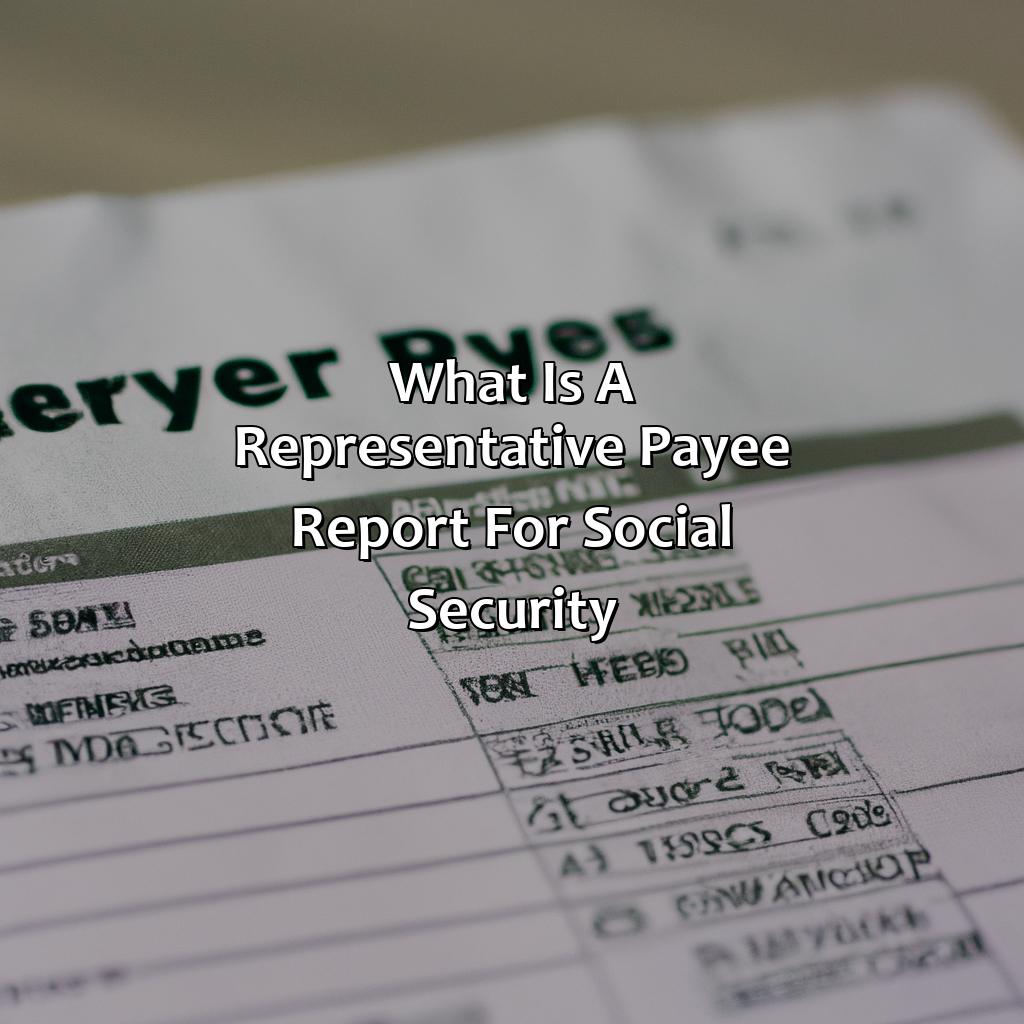What Is A Representative Payee Report For Social Security?
Key Takeaway:
- A Representative Payee Report is a document required by the Social Security Administration for individuals who are unable to manage their own Social Security benefits due to physical or mental incapacity.
- The report details the beneficiary’s income, expenses, and how the payee has managed their funds. This is important for ensuring that payees are using the funds for the beneficiary’s benefit and not for personal gain.
- Submitting a Representative Payee Report is critical for detecting potential fraud or misuse of benefits, and ensuring the accountability of payees. Required information for the report includes the beneficiary’s personal information, payee’s contact information, and a detailed report of income and expenses.
Are you struggling to manage your Social Security benefits? Learn what a representative payee report is and how it can help you better manage your Social Security payments. You can take control of your financial security today.
Overview of Representative Payee Report for Social Security
Representative Payee Report for Social Security is a document that a representative payee must submit to the Social Security Administration to report the usage of the beneficiary’s funds. The report includes details on the amount received for the beneficiary, how the funds were used, and any changes in circumstances that may affect the payment. This report enables the SSA to ensure that the funds are being managed in the best interest of the beneficiary. It is required annually, and non-compliance may result in sanctions.
In addition to the standard reporting requirements, the Representative Payee may have to report significant changes to the beneficiary’s circumstances, such as changes in residence, changes in employment status, or any changes in the beneficiary’s health status.
Pro Tip: The Representative Payee should keep meticulous records of all transactions related to the beneficiary’s funds and ensure that all information in the report is accurate and complete. Any discrepancies or errors in the report may lead to delays in payments or sanctions.
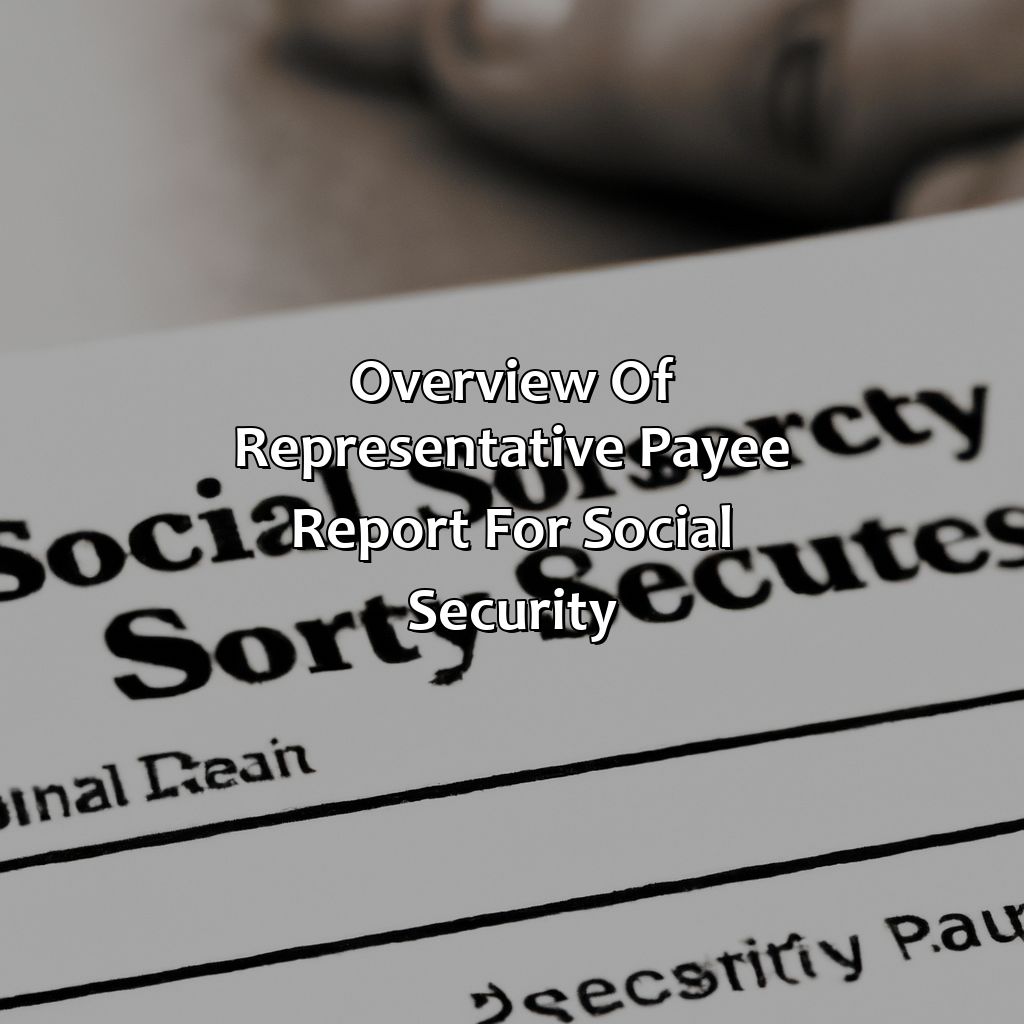
Image credits: retiregenz.com by James Arnold
What is a Representative Payee Report?
A Representative Payee Report is a document that reports on the financial transactions made by a payee on behalf of a beneficiary receiving Social Security benefits. It is a legal requirement for representative payees to submit this report annually. The report must provide an exact account of how the funds were spent and must include receipts and bank statements as proof. Failure to submit this report can lead to the suspension of benefits for the beneficiary.
To ensure compliance with the report, representative payees should maintain accurate records of all transactions and ensure that the funds are used solely for the beneficiary’s needs. It is also important to keep track of any changes in the beneficiary’s circumstance and promptly inform the Social Security Administration. By doing this, a representative payee can ensure that the beneficiary’s financial needs are being met.
Overall, a Representative Payee Report is an essential document that helps in accountability and safeguarding the welfare of Social Security beneficiaries who are unable to manage their finances independently. By completing this report on time and accurately, representative payees demonstrate their commitment to the well-being of their beneficiaries.
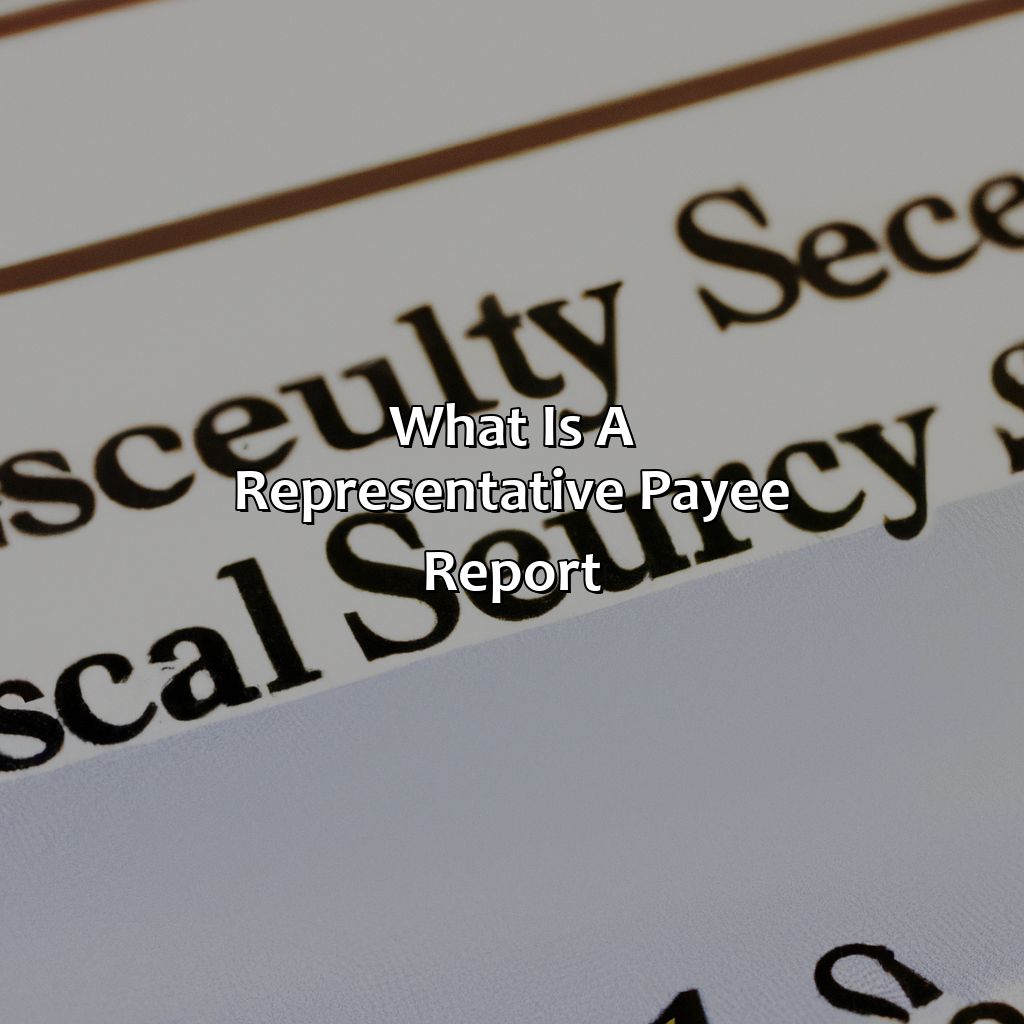
Image credits: retiregenz.com by Adam Jones
Importance of Representative Payee Report
The “Importance of Representative Payee Report” is of great importance for social security. Therefore, we explore this in detail. We will look into two sub-sections:
- Ensuring Accountability of Payees
- Identifying Potential Fraud or Misuse of Benefits
These parts are key to holding payees accountable and recognizing any fraudulent or damaging activities related to benefits.
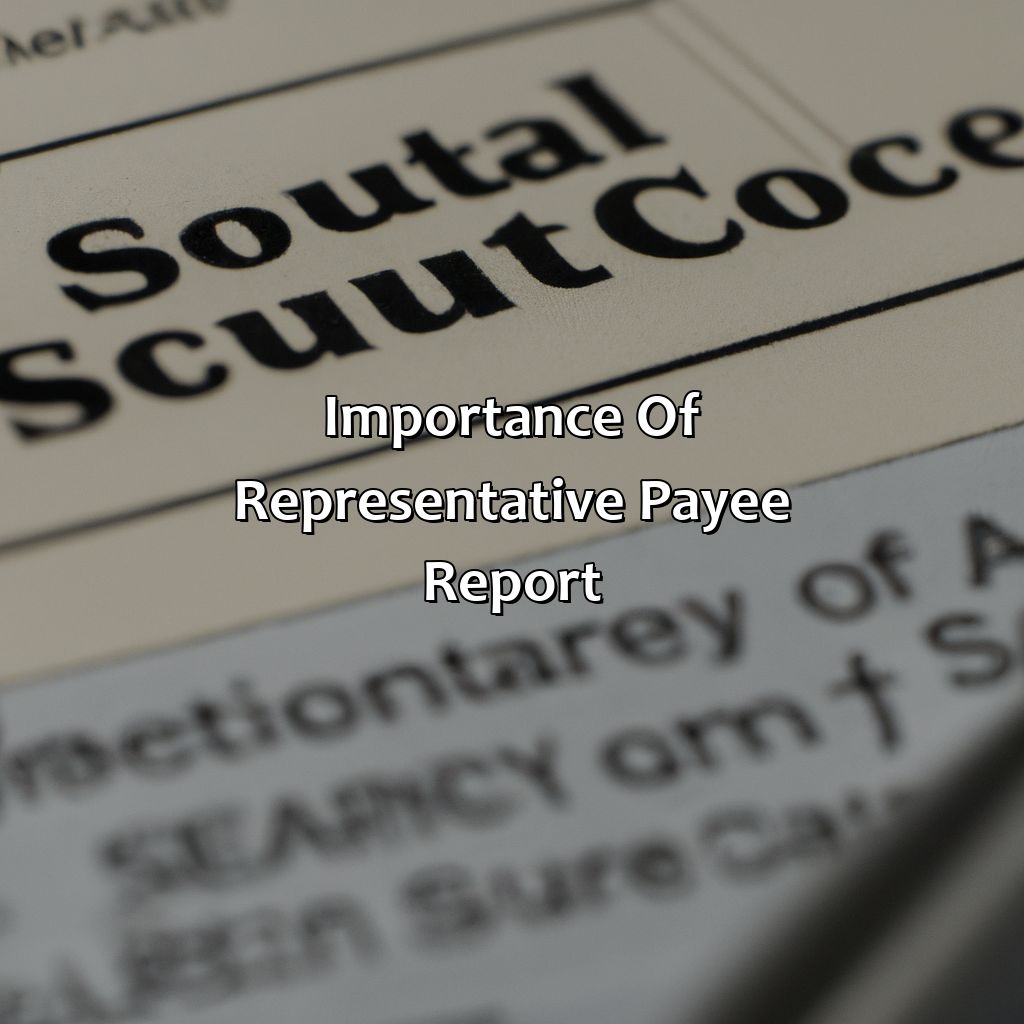
Image credits: retiregenz.com by Harry Arnold
Ensuring Accountability of Payees
The responsibility of ensuring proper use of Social Security funds lies with the appointed payees. Monitoring their activities has been made easy by the Representative Payee Report, which ensures accountability and transparency. This report tracks expenses and transactions of the beneficiaries’ funds, providing crucial oversight.
To ensure payees are utilizing funds as intended, courts rely on the Representative Payee Report to track all related expenditure. This document provides evidence should legal issues arise concerning mishandling of financial resources by a payee. Its timely submission is essential as it reflects goodwill and trustworthiness in fulfilling one’s obligation as a payee.
Apart from ensuring representative compliance, reporting also serves as an administrative tool to monitor safety and wellbeing, especially for vulnerable groups such as older adults or those with disabilities. Keeping comprehensive records also allows for easy transfer of responsibility when necessary.
According to the Social Security Administration website, failure to submit this report may result in suspension or replacement of a payee. It is therefore vital for designated payees to recognize the significance of this document and its timely submission to avoid adverse effects on both parties involved.
Looks like some people are taking the term ‘benefits’ a bit too literally.
Identifying Potential Fraud or Misuse of Benefits
Ascertaining Misuse of Benefits by Analyzing Representative Payee Report
Identifying potential fraudulent or illicit activities while managing Social Security benefits is critical. The Security Administration gathers information on the beneficiaries’ representative payee report to ensure that authorized individuals are correctly using the funds. Here’s how to decipher and isolate potential troubles:
- Unusual Spending Patterns: One of the fundamental indicators of possible neglect is suspicious spending patterns. As part of its compliance efforts, the SSA regularly checks for atypical cash withdrawals, large-scale transfers between accounts, and purchases made outside the beneficiary’s needs.
- False Information in Payee Report: SSA requires representative payees to submit reports accounting for all payments they have received as well as expenditures incurred on behalf of their charges. While investigating irregularities, agents look for inconsistencies in reports such as incorrect dates or receipts of services rendered that contradict official records.
- Neglected Beneficiaries: The SSA takes special care to maintain vigilance when older, mentally challenged adult beneficiaries are involved and an authorized person misappropriates their funds. Social workers keep a close eye out for signs such as unpaid bills despite having enough resources or substandard living conditions suggesting financial exploitation.
Moreover, it is crucial to interpret this data with prudence. False accusations could harm innocent people as well result in legal proceedings against them. For instance, a recent incident wherein investigators falsely accused an individual resulted in prosecutorial misconduct and tarnished reputations. Policymakers continue to stress that intelligence gathering methods must be calibrated adroitly to avoid such monumental errors.
Filing a payee report is easier than filing taxes, but unfortunately, you won’t be getting a refund for your hard work.
How to File a Representative Payee Report
Text: File social security representative payee report? You must have all required information. To avoid issues, use convenient filing methods. This section covers Required Information and Methods of Filing, shortly.
To file a social security representative payee report, it is important to have all required information ready and available. This will help you avoid issues and ensure a smooth filing process.
The Required Information for filing a social security representative payee report includes:
- The representative payee’s name, social security number, and relationship to the beneficiary.
- The beneficiary’s name and social security number.
- The type of social security or supplemental security income benefits being paid.
- Information about the beneficiary’s income, resources, and living arrangements.
There are convenient filing methods available to file a social security representative payee report. These include:
- Online: The Social Security Administration’s website offers an online form that can be completed and submitted electronically.
- Mail: Printed forms can be filled out and mailed to the Social Security Administration.
- In-person: Forms can be filled out and submitted in-person at a local Social Security Administration office.
This section covers Required Information and Methods of Filing, shortly.
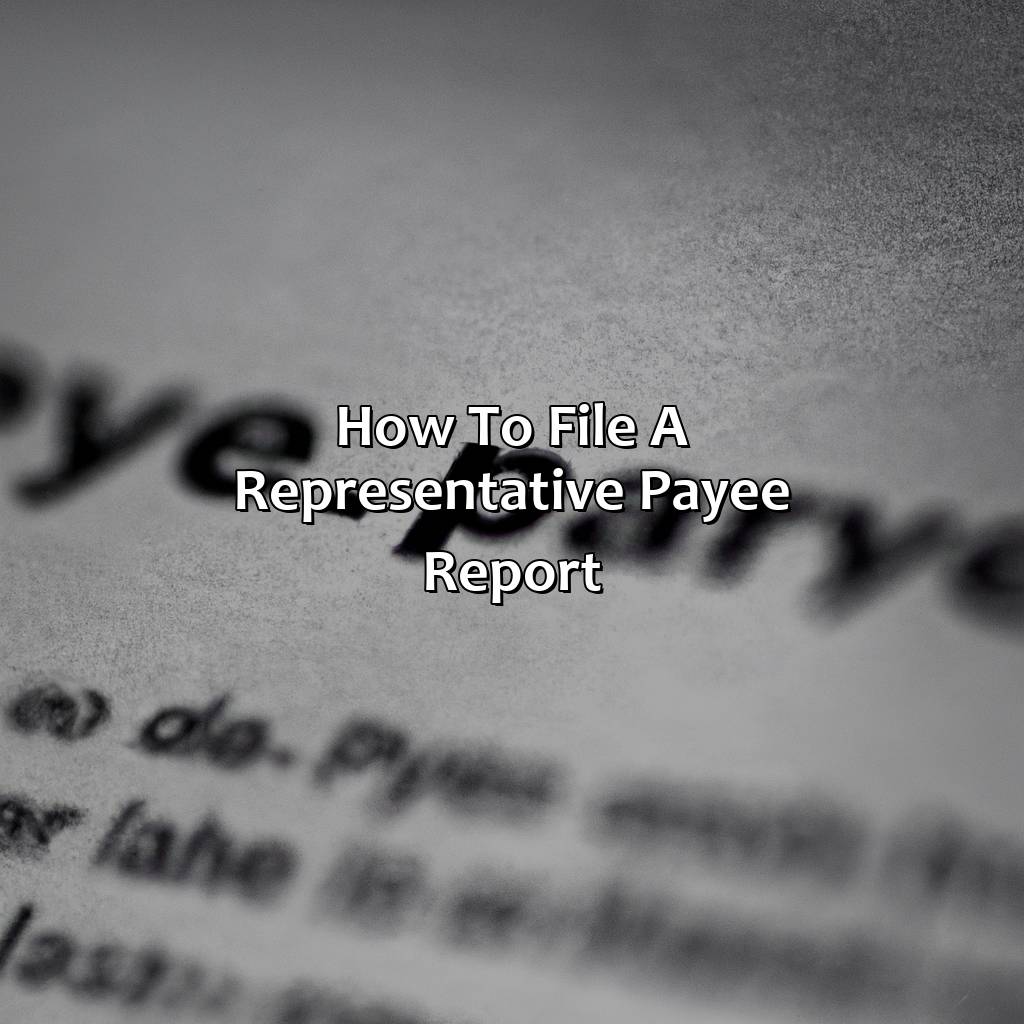
Image credits: retiregenz.com by Adam Jones
Required Information for the Report
To complete a representative payee report, you need to provide certain information. The required information includes the beneficiary’s personal details such as their name, social security number and disability status.
Other requirements include financial information like sources of income, expenses and any savings or investments. Additionally, you must also provide any changes in the beneficiary’s living situation or employment status.
It is essential to ensure that all the required information for a representative payee report is accurate and up-to-date. The Social Security Administration relies on this data to determine whether beneficiaries are receiving the appropriate benefits. Failure to file an accurate report may lead to suspension or termination of benefits.
To avoid missing out on any important updates and notifications from the Social Security Administration, it is crucial to submit all necessary reports on time and with precision. By doing so, you will continue receiving benefits without any disruptions while fulfilling your responsibilities towards your loved ones registered under social security programs.
Get ready to play a game of paperwork hopscotch as we explore the various methods of filing the oh-so-fun Representative Payee Report.
Methods of Filing the Report
To report the activities of a representative payee for the Social Security Administration, there are multiple methods of filing the report. Let’s take a look at how to file a Representative Payee Report.
- Via Phone – Call the SSA’s toll-free number and follow the prompts given by the automated attendant.
- Online – Visit the SSA website and fill in the details on Representative Payee Accounting form.
- By Mail – Download and print standard forms (e.g. SSA-6230) from ssa.gov and mail them to your local Social Security office.
- In Person – Visit your local Social Security office to complete and submit form SSA-6230 in person.
It is worth mentioning that filing via phone or online methods usually takes less time than mailing or submitting in-person alternatives. When filing, have all necessary information handy such as both your own and representative payee’s name, address, Social Security Number, etc.
Interestingly enough, before filing an annual Representative Payee Report, it is important to ensure accuracy while completing each section as this directly impacts beneficiaries’ funding received through their representative payeeship agreement.
Five Facts About Representative Payee Report for Social Security:
A representative payee report for social security is a tool used by the Social Security Administration (SSA) to track the progress of beneficiaries who have a representative payee. (Source: SSA)
Representative payees are appointed by the SSA to manage the funds of beneficiaries who are unable to manage their own finances. (Source: SSA)
Representative payees are required to submit a report to the SSA detailing how the benefits were spent and any changes in the beneficiary’s circumstance. (Source: SSA)
Failure to submit a representative payee report can result in the removal of the representative payee and a delay or cessation of benefits to the beneficiary. (Source: SSA)
The representative payee report helps ensure that the beneficiary’s financial needs are being met and that the representative payee is acting in the beneficiary’s best interests. (Source: SSA)
FAQs about What Is A Representative Payee Report For Social Security?
What is a Representative Payee Report for Social Security?
A Representative Payee Report for Social Security is a report that must be submitted to the Social Security Administration by the representative payee of someone who receives Social Security benefits. The report is used to update the Social Security Administration on how the benefits are being used and to ensure that the beneficiary’s needs are being met.
Who is a Representative Payee?
A representative payee is a person or organization who is appointed by the Social Security Administration to manage the benefits of someone who is unable to manage their own affairs. Representative payees are typically appointed for individuals who are minors, have mental or physical disabilities, or are otherwise unable to manage their own benefits.
What information is required in a Representative Payee Report?
A Representative Payee Report must include information on how the benefits were used during the reporting period, including information on any expenses related to the beneficiary’s care and well-being. The report may also include information on the beneficiary’s current health status and any changes in their living situation or financial needs.
How often must a Representative Payee Report be submitted?
A Representative Payee Report must be submitted to the Social Security Administration annually, or more frequently if requested by the agency. Failure to submit the report on time may result in the suspension of the beneficiary’s benefits.
Who can submit a Representative Payee Report?
A Representative Payee Report can only be submitted by the representative payee appointed by the Social Security Administration. The report must be signed by the representative payee and include any supporting documentation required by the agency.
What happens if a Representative Payee Report is not submitted?
If a Representative Payee Report is not submitted to the Social Security Administration, the beneficiary’s benefits may be suspended. The representative payee may also be subject to penalties for failing to submit the required report.
 Checkout this IRS Loophole
Checkout this IRS Loophole 
